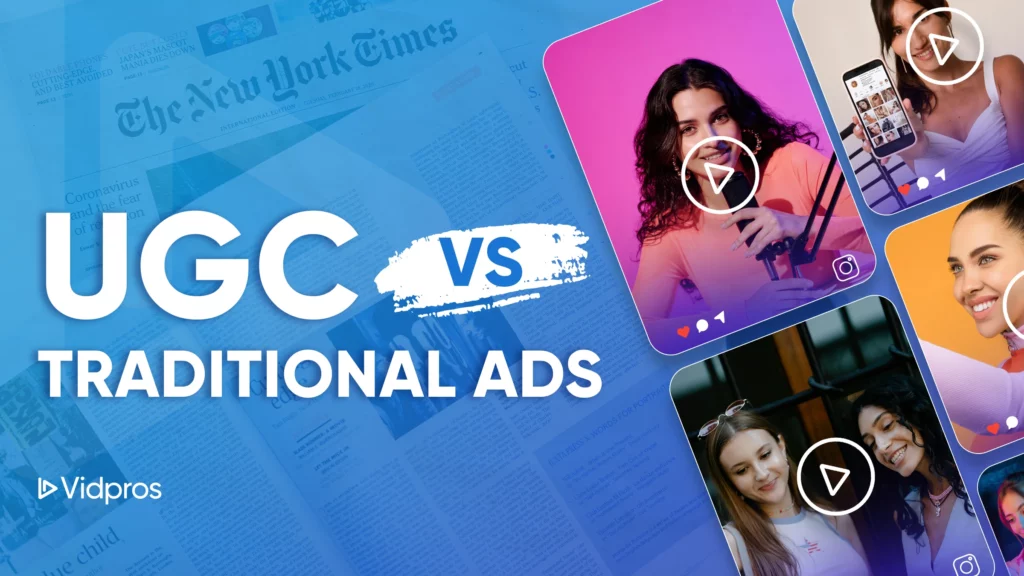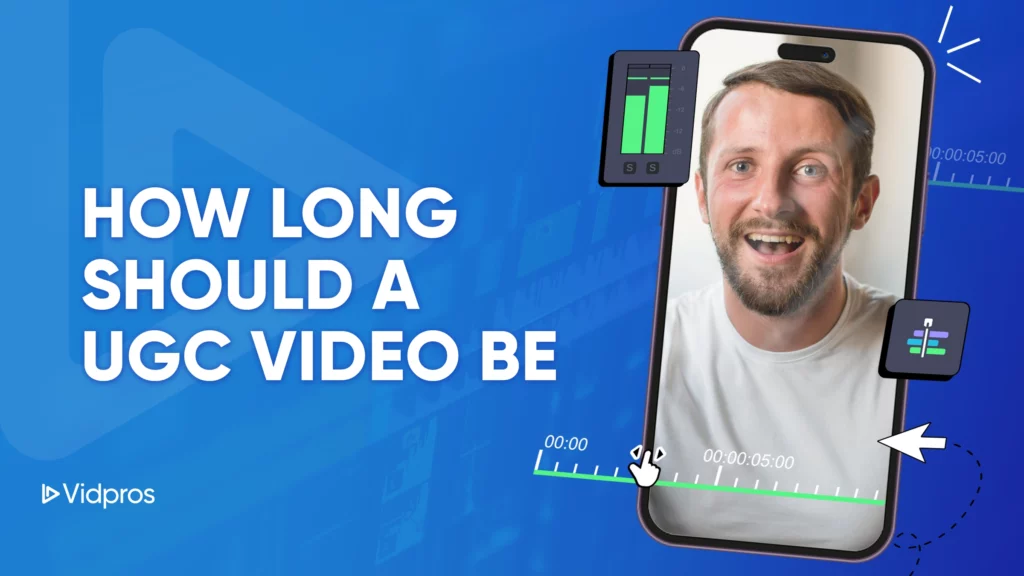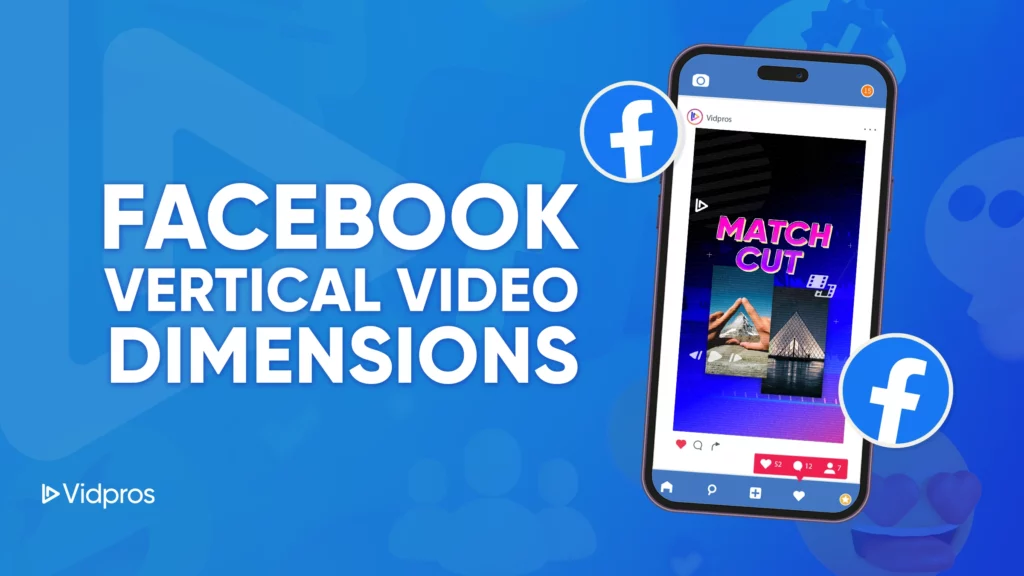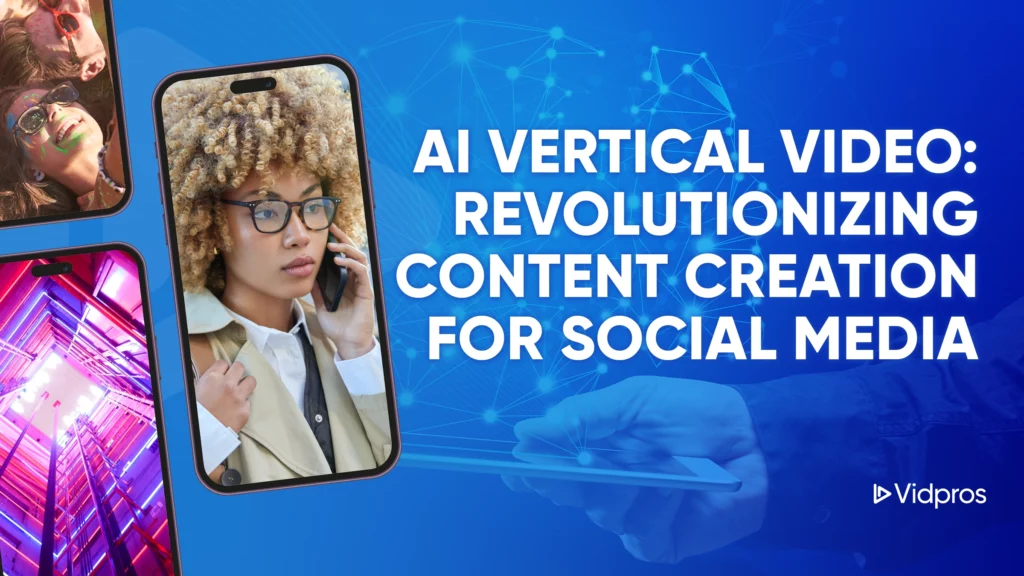In the fast-paced world of video content, one question remains whether to choose vertical or horizontal video. The rise of mobile content has changed how we consume media, making vertical videos more common than ever before. But is one format better than the other? The vertical video debate highlights that neither format is inherently superior; the choice should depend on the content type, target audience, and distribution platforms.
It largely depends on your platform and audience. Vertical videos dominate platforms like Instagram and TikTok, where users engage with content in portrait mode. However, horizontal videos still reign supreme on platforms like YouTube and in traditional filmmaking. Your choice should reflect where your audience spends most of their time and how they engage with your content.
Let’s dive into the differences between vertical and horizontal videos, and explore their strengths and weaknesses. We’ll also discuss tools like the best free vertical video editor for iPhone and help you decide which works best for your content.
Understanding Video Orientation
Video orientation refers to the way a video is displayed on a screen, either horizontally or vertically. This aspect of video content creation is crucial because it directly impacts how your audience engages with your material and how effectively your message is conveyed. Whether you’re creating content for social media, a professional presentation, or a cinematic experience, understanding video orientation helps you choose the right format to captivate your viewers and deliver your message with clarity.
What is Horizontal Video?
Horizontal video, also known as landscape video, is a video format that is wider than it is tall. This traditional format has been the standard for television and cinema for decades, and it continues to be widely used today. Horizontal video is particularly effective for showcasing wide scenes, such as sprawling landscapes, bustling cityscapes, or group shots. It excels in conveying the dynamics of movement, making it a popular choice for action scenes, sports videos, and any content that benefits from a broader visual perspective. For instance, travel vloggers and tech reviewers often prefer horizontal video to capture the full scope of their subjects, providing viewers with a more immersive and detailed experience.
What is Vertical Video?
Vertical video, also known as portrait video, is a video format that is taller than it is wide. This format has gained significant popularity with the rise of mobile devices and social media platforms. Vertical video is ideal for showcasing tall subjects, such as people, buildings, or products, and it provides a more immersive experience on mobile devices by taking up the entire screen. This format is particularly effective for social media content, where users typically hold their phones vertically. Whether you’re creating Instagram Stories, TikTok videos, or Snapchat content, vertical video allows you to engage your audience more effectively by fitting seamlessly into their viewing habits.
Vertical vs Horizontal Video: What’s the Difference?
Vertical videos are videos shot in portrait orientation (aspect ratio 9:16), perfect for viewing on mobile devices. The popularity of platforms like Instagram, TikTok, and YouTube Shorts has significantly driven the rise of vertical video. Since most people use their phones vertically, this format delivers a full-screen experience without requiring viewers to rotate their devices.
Horizontal videos, on the other hand, are filmed in landscape orientation (aspect ratio 16:9), which is the traditional format used for television and cinema. This format works well on platforms like YouTube, where users often watch videos on wider screens such as desktops or tablets. Horizontal videos are ideal for scenes that require a broader perspective, like travel vlogs, sports events, and cinematic storytelling. The choice between horizontal or vertical videos depends on the content type, audience, and platform, with each format offering unique advantages.
Where Vertical Video Shines
Social Media Platforms
Vertical video thrives on social media. Platforms like Instagram Stories, TikTok, and Snapchat are built around vertical content. Brands such as Sephora and Nike have embraced vertical formats in their social media campaigns, using quick, visually captivating videos to engage their mobile-first audiences. Facebook video ads, particularly in vertical formats, have also proven to be highly effective, outperforming horizontal ones in terms of reach, engagement, and cost-effectiveness.
For example, Sephora’s Instagram stories frequently feature vertical tutorials and product highlights that fit seamlessly into users’ feeds. These videos are bite-sized, visually appealing, and optimized for mobile devices. Nike has also leveraged vertical videos to showcase new product launches and athlete collaborations, effectively capturing attention with dynamic, action-driven clips that resonate with their audience.
Other brands like Red Bull and Starbucks have also tapped into the vertical video trend, creating content that is not only engaging but perfectly tailored for mobile users. Red Bull’s high-energy extreme sports clips, optimized for vertical platforms, keep their brand message bold and fast-paced. Starbucks, meanwhile, uses vertical videos on Instagram to highlight new drink offerings and promotions, connecting with customers on the go.
Mobile Viewership
With mobile traffic accounting for over half of global web usage, vertical video has become the go-to format for engaging viewers where they spend the most time: on their smartphones. Short-form content creators, particularly on TikTok and YouTube Shorts, are increasingly relying on vertical videos to deliver messages quickly, knowing that users are more likely to watch when it doesn’t require switching screen orientation.
This shift has also influenced how advertisers approach video marketing. Brands now prioritize vertical video ads to ensure they fit seamlessly into users’ viewing experiences, whether on Instagram Stories or Snapchat Ads. This approach not only increases engagement but also drives conversions by meeting viewers where they already are—on mobile.
With tools like Instagram’s built-in editor and TikTok’s intuitive video creation features, marketers and creators alike can produce vertical videos that maximize visibility and captivate their target audience in just a few seconds.
Ease of Creation
Vertical video is simple to create with just a smartphone. The iPhone, for instance, has powerful built-in tools that make vertical video creation accessible to anyone. If you’re just starting out, using the best free vertical video editor for iPhone can help you edit your videos with ease.
Apps like iMovie, InShot, and Adobe Premiere Rush allow you to quickly edit and enhance your vertical videos, add filters, and even upload directly to social platforms.
For those looking to take their vertical video production to the next level, there are also professional editing tools available that offer advanced features. Final Cut Pro and LumaFusion, for example, are favored by content creators who want more control over their edits, allowing for greater precision and customization.
By combining these advanced tools with the ease of mobile shooting, even amateur creators can produce high-quality vertical content that rivals the work of professionals. This accessibility has democratized content creation, making vertical video a powerful tool for anyone looking to make an impact online.
Tips for Filming Vertical Videos
Filming vertical videos requires a different approach than filming horizontal videos. Here are some tips to help you get started and ensure your vertical videos are high-quality and engaging:
Recording Shots
When recording vertical videos, it’s essential to consider the type of shot you’re using. Here are some common types of shots that work well for vertical videos:
-
Headshot: A close-up shot of a person’s face, ideal for interviews or tutorials. This shot allows you to capture facial expressions and emotions effectively.
-
Medium shot: A shot that frames a person from the waist up, ideal for showcasing products or demonstrating techniques. This shot provides a good balance between the subject and their surroundings.
-
Full shot: A shot that frames a person from head to toe, ideal for showcasing fashion or beauty products. This shot is perfect for highlighting outfits or full-body movements.
-
Long shot: A shot that frames a person or object from a distance, ideal for showcasing scenery or establishing a location. This shot helps set the context and environment for your video.
When recording vertical videos, it’s also essential to consider the lighting, sound, and editing. Make sure to use good lighting to illuminate your subject, and invest in a good microphone to capture high-quality sound. When editing your vertical video, use video editing software that supports vertical video, and consider adding captions or subtitles to make your video more engaging. Apps like iMovie, InShot, and Adobe Premiere Rush are excellent tools for editing vertical videos, allowing you to enhance your content and make it stand out on social media platforms.
Where Horizontal Video Excels
Wider Visual Perspective
Horizontal video offers a broader field of view, which makes it ideal for cinematic experiences. Travel and adventure content creators like Marques Brownlee (MKBHD) or Peter McKinnon prefer the horizontal format when showcasing sprawling landscapes or intricate tech reviews, because it allows for more detail and wider framing.
In addition to tech and travel, filmmakers and vloggers also favor horizontal video for storytelling, as it mimics the traditional widescreen format used in movies and television. This format helps capture more of the environment or multiple subjects within a single frame, creating a richer visual narrative.
For instance, brands in industries like automotive or real estate often use horizontal video to highlight large products or spaces, ensuring that every detail is visible to the viewer.
By using the full width of the screen, horizontal videos provide an immersive experience that draws audiences deeper into the content. The horizontal video format is particularly important for creating personalized video messages, as it enhances engagement and provides more context, making it ideal for showcasing services and establishing trust with potential customers.
Compatibility with Larger Screens
If your audience consumes content on desktops, laptops, or smart TVs, horizontal video is the superior option. Platforms like YouTube have been built around horizontal video for years, offering viewers a more immersive experience when watching longer-form content like tutorials, reviews, and vlogs. When creators like MKBHD post a tech review, the 16:9 format ensures that every detail is captured crisply on both mobile and larger devices.
Moreover, horizontal video is perfect for presentations, webinars, or any type of content that demands high-quality visuals across multiple screen sizes. Brands in industries such as gaming, automotive, and entertainment often prioritize horizontal videos when showcasing product demos or trailers, as this format offers superior resolution and clarity on larger screens.
With the rise of streaming services and smart TVs, horizontal video remains an essential format for delivering rich, detailed content to audiences who value an expansive viewing experience.
Professional Look
Vertical videos feel like a quick, casual thing, while horizontal videos look more serious and professional. Companies like Apple and Tesla use horizontal videos when they want to show off their products in a fancy way. If you need your project to look professional, like a business presentation or a movie, you should probably use horizontal video.
In fact, many industries such as corporate training, education, and luxury goods rely heavily on horizontal video for its polished and cinematic feel. Conferences, keynote speeches, and promotional campaigns often choose this format to enhance their brand image, as horizontal videos allow for more elaborate compositions and editing techniques.
For example, when Tesla launches a new product, the wide-angle shots and smooth transitions of horizontal videos create a sleek, high-end aesthetic that aligns with their brand’s innovative and cutting-edge identity. This format conveys authority and sophistication, making it the go-to choice for projects aiming to impress or make a lasting impact.
How to Decide: Vertical or Horizontal?

When choosing between vertical or horizontal video, consider your audience, platform, and content goals.
Audience
Are they primarily mobile users? If so, vertical may be your best bet. For instance, younger audiences who spend hours on TikTok and Instagram will likely prefer vertical videos.
On the other hand, if your audience engages more with content on desktops, laptops, or large screens, horizontal videos might be more effective. For example, educational content and professional tutorials often cater to users who access videos on larger displays for a more comprehensive viewing experience.
By understanding your audience’s preferred devices and viewing habits, you can tailor your content format to maximize engagement and effectiveness. Vertical videos excel at capturing attention in mobile-centric environments, while horizontal videos provide an enhanced viewing experience for users on bigger screens.
Platform
What platform are you targeting? TikTok, Instagram Stories, and YouTube Shorts favor vertical formats, while YouTube’s standard platform supports horizontal videos.
Additionally, platform algorithms often favor content that aligns with their preferred format. For instance, vertical videos on TikTok and Instagram Stories are optimized for their interfaces, leading to better engagement and visibility in users’ feeds.
Conversely, YouTube’s horizontal format is tailored for longer content, providing a more immersive experience for in-depth videos like tutorials, documentaries, and vlogs. Understanding the platform’s strengths and design will help you choose the right format, ensuring your content performs optimally and reaches your intended audience effectively.
This strategic approach not only enhances viewer satisfaction but also boosts your content’s chances of being promoted by the platform’s algorithm.
Content Goals
What kind of story are you trying to tell? Quick, engaging snippets often work best in vertical formats. If you’re creating long-form content or something that needs high production value, horizontal is often the way to go.
For instance, vertical videos are ideal for bite-sized content such as quick tips, behind-the-scenes glimpses, or promotional teasers that capture attention rapidly and cater to the fast-scrolling nature of social media.
In contrast, horizontal videos excel in delivering detailed narratives, in-depth tutorials, or cinematic visuals that benefit from a wider frame and higher production quality. When your goal is to create an immersive experience or convey complex information, the horizontal format provides the necessary space and depth to achieve a polished and professional presentation.
Balancing your content goals with the appropriate format ensures that your message is delivered effectively and resonates with your audience.
Video Editors for Both Formats

Editing your video is key, whether you’re working in vertical or horizontal formats. For vertical videos, the best free vertical video editor for iPhone includes options like iMovie and InShot, which allow users to create professional-looking content directly from their phones. These apps are perfect for quick edits on the go, and you can easily publish directly to social media platforms.
However, if you’re serious about taking your video content to the next level, consider a professional vertical video editor service like Vidpros. They offer expert editing to optimize your vertical and horizontal content for any platform, ensuring that your videos are polished, professional, and tailored for maximum engagement. Understanding the unique features and target audiences of different video platforms, such as YouTube, Vimeo, and Twitch, is crucial for effective content creation.
Final Thoughts
In the debate between vertical and horizontal video, there’s no one-size-fits-all answer. It ultimately depends on your audience, content, and the platform you’re using. Vertical video is ideal for mobile-first social media platforms like TikTok and Instagram, while horizontal video remains the go-to for long-form and professional content on platforms like YouTube. Whichever format you choose, ensuring your content is polished and engaging is key.
That’s where Vidpros comes in. Whether you’re working with vertical or horizontal video, Vidpros’ professional video editing services will help you stand out. We provide expert edits tailored for social media, YouTube, and beyond—no matter the format.
Don’t let poor video quality hold you back. Contact Vidpros today and let us bring your vision to life with high-quality, optimized video content.













